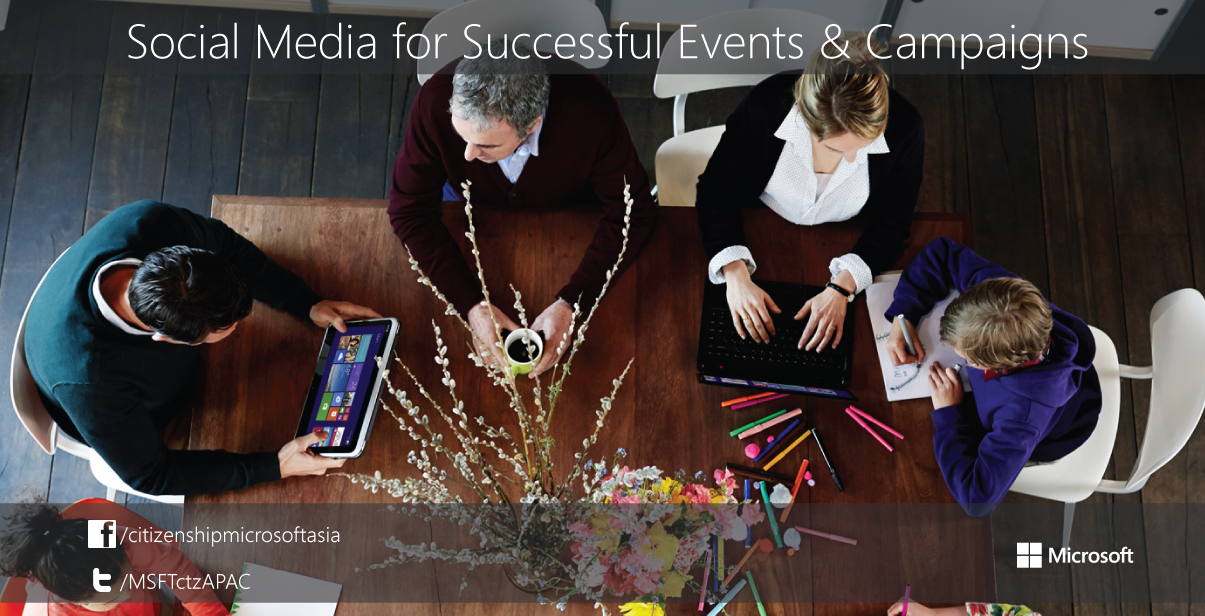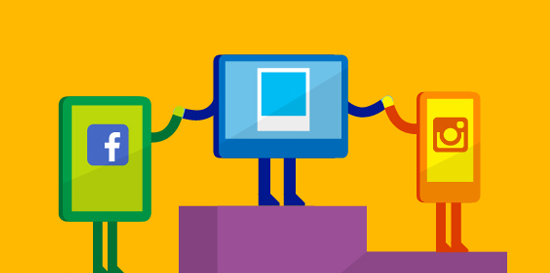Social Media for Successful Events & Campaigns: Facebook & Twitter
More and more organisations are finding social media to be essential when it comes to organising and promoting events and campaigns. A recent study conducted by Maximillion, which surveyed over 1,500 event organisers around the world, revealed the following:
- Facebook is the most popular platform (78% of survey participants voted it as their preferred medium), followed by Twitter (56%)
- 75% of organisers said that social media is very important for events
- Top reasons for using social media include increasing awareness for events (58%), raising brand awareness of the brand (49%) and creating a new information channel (41%)
Microsoft Citizenship Asia Pacific has run several campaigns over the years, the most recent being the YouthSpark #WeSpeakCode campaign, in which social media played a key role. This post will focus on how we have used Facebook and Twitter to engage with our followers and promote the campaign.
Facebook is the main social media platform used to connect with #WeSpeakCode friends and supporters. Within the first year, the official We Speak Code Facebook page gained more than 10,000 fans. As we entered the second year, the page’s popularity scaled up to reach 18,000 fans.
The page currently averages about 50,000 impressions a month, with a 300% increase during March 2015 when the main #WeSpeakCode events were held across the Asia Pacific region.
Top Facebook tips:
- Consider a standalone Facebook page. Already running a Facebook page? Decide whether your event or campaign merits a separate page. Microsoft Citizenship Asia Pacific has an existing page, however, due to the depth and breadth of the #WeSpeakCode programme, we decided a separate page would be best.
- Keep it focused. Make sure you stick to the campaign’s specific cause or theme throughout your Facebook page.
- Vary your content. Regularly share resources and stories from other pages with a common theme or interest to your campaign to help keep people engaged.
- Keep a regular schedule. Even if you’re running an annual campaign, keep in touch with your supporters throughout the year on a less frequent basis.
- Measure the impact. The#WeSpeakCode Facebook page uses an analytics tool called Sprout Social to evaluate campaign metrics.
For the #WeSpeakCode campaign, we decided to leverage our existing Microsoft Citizenship Asia Pacific Twitter account, keeping up the campaign momentum. In the first five months of 2015, the campaign had a 6.3 million Reach and 18.6 Million Exposure for the #WeSpeakCode hashtag. In addition, there were 4,600 tweets contributed to the #WeSpeakCode hashtag, from 2,000 contributors.
Top Twitter tips:
- Use a memorable hashtag. And, make sure it’s not too long, and that no one else is currently using it.
- Promote your hashtag. Mention it everywhere that you are promoting your event/campaign – emails, newsletters, brochures, flyers, posters and other marketing materials.
- Engage with people who are contributing to the hashtag. Retweet some of the best contributions. Mention some of your best contributors. Respond to their Tweets.
- Use analytics to measure your impact. To find reach and other metrics for your hashtag, Tweetreach by Union Metrics is an effective tool. For general metrics on a Twitter account, we have used tools like Sprout Social and HootSuite.
In future posts, we will tackle other tools that we used for the #WeSpeakCode campaign, such as Thunderclap and Instagram.
There are many social media channels that can help boost support for your campaign. The ground rules are simple: analyse your goals, target audience and resources, and make use of the channels that will help you get the most out of your social media efforts.
Thanks to Shai Coggins, Founder and Manager of boutique digital media company Vervely , who contributed this guest blog. An online content and community professional for 15 years, Shai is currently an external social media manager for Microsoft Citizenship Asia Pacific. She has been honoured by a number of media, including Fast Company (‘Most Influential Women in Technology’, 2009).

